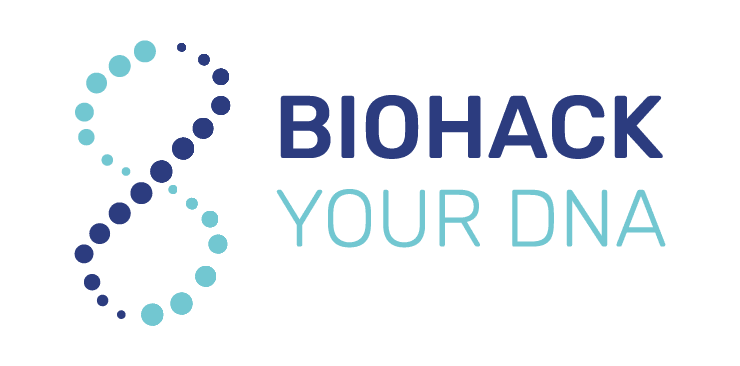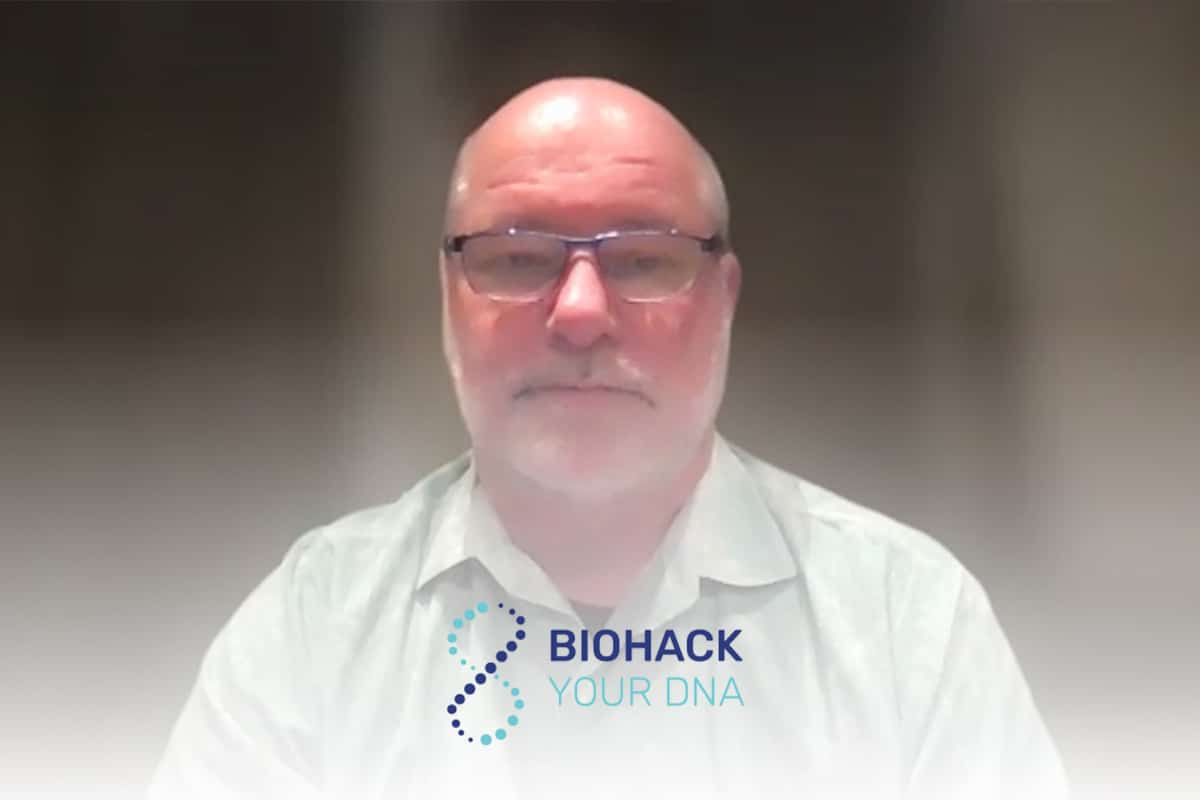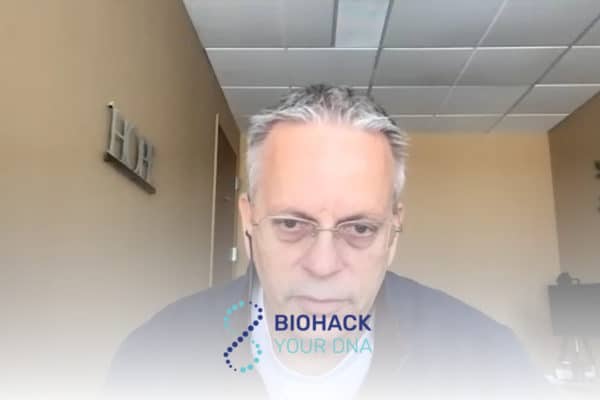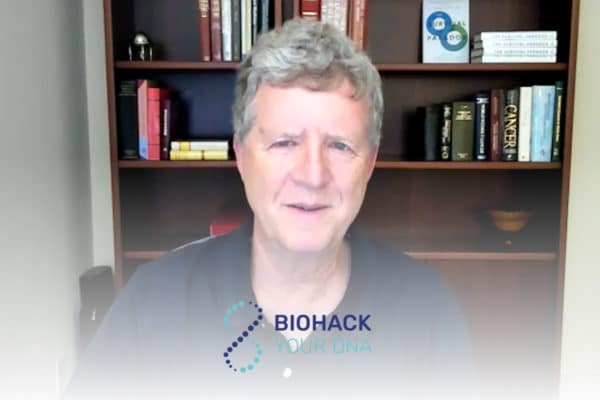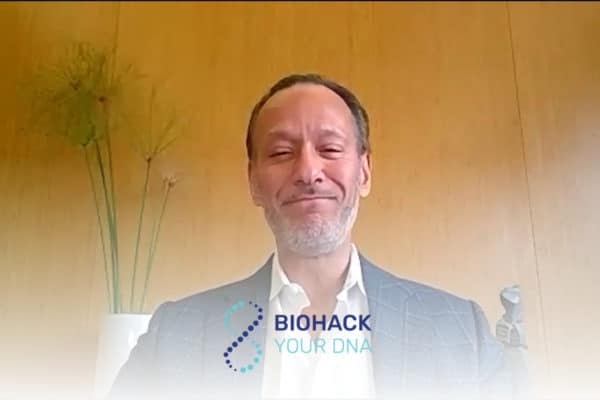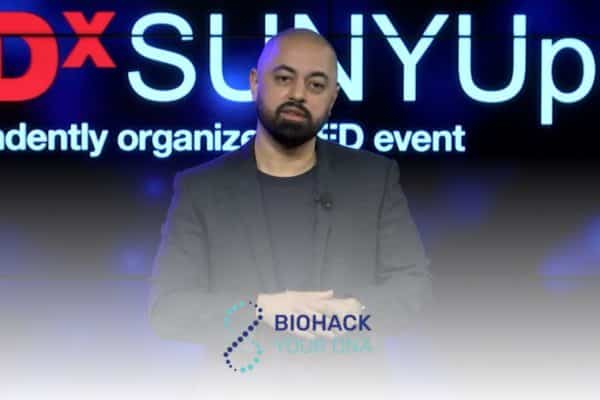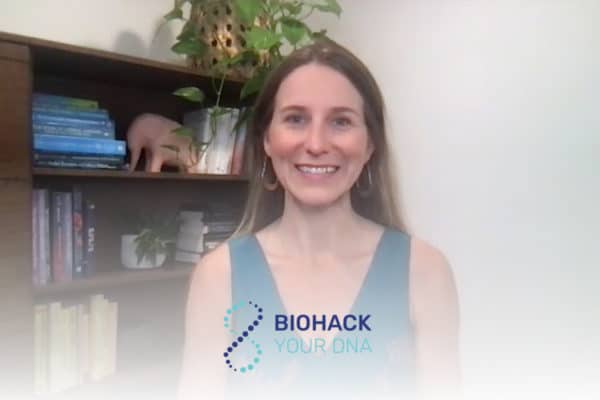Join the discussion below

Kashif Khan is the Chief Executive Officer and Founder of The DNA Company, where personalized medicine is being pioneered through unique insights into the human genome. With the largest study of its kind globally, The DNA Company has developed a functional approach to genomic interpretation overlaying environment, nutrition, and lifestyle... Read More
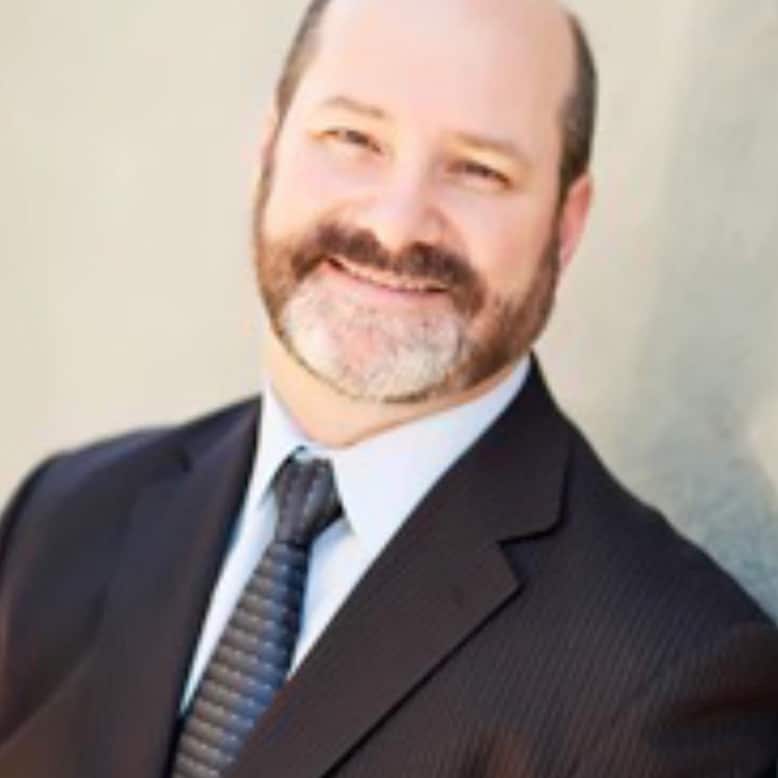
Patrick K. Porter, PhD is an award-winning author, educator, consultant, entrepreneur, and speaker. With 30 years of experience operating the largest self-help franchise, he has become a highly sought-after expert within the personal improvement industry, having sold over 7 million of his self-help products worldwide. He invented the first portable... Read More
- Stress can’t be eliminated but it can be managed.
- Your brain is either in a survivor state or a thriving state.
- What is Brain Fitness and why you should care?
- The truth about sleep… It’s not what you think.
- Psychoimunology how your thoughts effect your immune system.
Related Topics
BioHacking, Brainwaves, Heart Rate Variability, Melatonin, Mental Health, Sleep, Stress, Stress ManagementKashif Khan
Welcome back, everyone. So, we’re talking to Dr. Porter today. Really excited ’cause as we’ve been sort of out there in the world going to different conferences and events, we always see this fine gentleman surrounded by a crowd of people trying to pick his brain and figure out how they can fix their own, because he’s done some brilliant work. I had the pleasure of sort of to go on the side and chatting with you for a minute and learning a lot. So first of all, welcome. Thank you for being here.
Patrick Porter, PhD
It’s great to be here. Thanks for having me.
Kashif Khan
And it’s really cool what you’ve done. We’re gonna dive into some of that. We’re gonna figure out how everyone’s brain actually works and then we’re gonna talk about some of the solutions you’ve built. But what you’re doing is truly phenomenal. We’re gonna get into that as well. But maybe we’ll start there in terms of how you think about the brain and the current state, like what’s going on today? Why is everybody having so many problems?
Patrick Porter, PhD
Well, you can think of the brain kind of as a metaphor. It’s like the master control center of an airport. It controls the planes coming in and out. It controls every activity of the body. And there’s actually three brains. I wanna make sure everyone understands. There’s the brain between our ears, which most people give a lot of credence to. And of course we use that as the logo. But kind of think of that brain almost like a transmitter and a receiver of information. It’s basically almost like a Google tablet. It doesn’t really hold the knowledge. Your gut, which is super important, is also a gut brain. That’s why when somebody gets in an accident and severs their spine, they can still digest food.
They just can’t walk. They can’t get the information from the brain in their head down to the rest of their body. But that brain actually has more neuron connections in the gut than the one between our ears. But the one that controls the whole show and that’s what’s causing most of the problems today, is our heart. We have 40,000 neutrino cells, these are brain cells in our heart that basically communicates with the rest of the body twice as much as the body talks to the heart. So, when you think about people under stress, primarily that stress causes massive cascade of different activities in the body. And it all starts with the heart. And there’s actually statistics, even before the last two years that we’ve all been through, that there’s more heart attacks on Monday morning than any other day of the week.
And that’s because the heart controls the show. So, think in terms of the stress that we’re under. Just think of this for a moment. Your brain shrinks three quarters of an inch every night when you sleep, but we can hydrate it. It comes back to life and feed it essential fats and it’s working. But a year of prolonged stress will damage the brain in such a way that it will actually atrophy three quarters of an inch. So, we have to do something to keep our brain functioning at peak performance or stress, which now everybody seems to think is normal. This isn’t a normal. We can’t even turn on the television, the radio, even check the internet without somebody telling us what stressful thing’s going on. From wars all over the world to what’s going on with our health and trying to make decisions for us. They say a confused mind doesn’t make a decision. So, a lot of people are just sitting there, stressing out in their own juices and that’s probably the worst thing that could happen to them right now.
Kashif Khan
Yeah, there’s this hyper constant delivery of stressful load no matter where you go. The way content is delivered, it’s micro, like it’s been refined for us, but it’s all headlines. It’s all like wow factor and sizzle, which is what really messes with your head. And there’s something that I’ve heard you say, which is unlike what other people say, it’s not about eliminating stress. It’s about managing it. In fact, you often say you can’t eliminate it. So, what do people do there?
Patrick Porter, PhD
The key thing is that just like all the people out there optimizing their health with other supplements or activities, there’s a combination of those. It’s gonna be very powerful for the brain. In order to really manage this stress, there’s three waves to this wellness solution. Number one is you can’t outthink a bad diet. You gotta be eating healthy foods, taking your supplements, taking care of your body. Number two, you gotta get up and move and breathe. And that’s one of the things great with The DNA Company. You can tell ’em what might be the best way to move and breathe, what foods are gonna be good for them, because those are unknown stresses. They might think they’re doing all the right things, but they’re not. And then number three is we need some form of brain fitness.
And that’s where BrainTap comes in, where we talk about light, sound, and vibration and just tuning up the brain. Think of it as the CPU of the body. And if it’s not running at the right clock speed, then the rest of the system. It’s like having too many windows open. That’s what the stress is like. When you have to reboot your computer because you ran outta memory. But with us, we have infinite space. So, the load keeps getting stronger and stronger. So, we have to have a way to naturally disassociate from that stress. And there’s a lot of ways. You can do it through breath work if you want. There’s breath work you can do. There’s yoga, there’s tai chi, there’s dance. You can eat healthy foods. But you still have to take some time to disassociate, unplug from what’s going on in the world around you, and plug into the world that’s happening within you. How are you interacting with the information you have available to you? And are you a stressor? Some people actually don’t get out of bed ’til they have adequate stress. They wake up, they’re feeling good, but then they amplify the day’s experience by catastrophizing what might happen during the day. And that happens the night before when we go to sleep and also our morning routine. So, we can talk a little bit about those two things, if you feel appropriate.
Kashif Khan
Sure. So, something you said there really resonated because me recently, I mean you know this well, we are in a growth phase of our business and we’re really trying to get out there and help people. And so I got to this point where it was a complete overwhelm. There was several hundred, sometimes 4, 500 emails a day, phone calls, texts. That’s before I got to my work, the projects and things I actually had to work on, legal, accounting, et cetera, thinking about funding and how to grow the company. And I found that just intuitively I had to tell people to stop contacting me. That I had to tell people, “Unless you actually need me,” the internal team at least. So, you talk about brain fitness and literally just think about the way you train your muscles or you’re burning fat. We don’t think about our brain that way. Firstly, this phenomenon of these windows. Is there a measure? Is there a known load that’s appropriate for us and how do we know when we got there? And then how does brain fitness help that?
Patrick Porter, PhD
Right, well you could look at, we have a device called the Neurocheck where we can actually check the body. We’re working to get that integrated with the Oura Ring, the Biostrap, the Apple Watch. But for now, for those out there that have these smart devices, you can look at your HRB. The heart rate variability is really a sign of not immediate pending doom, but it tells you you’re on the roadmap to doom or you’re on the roadmap to health and vitality. ‘Cause you can look at that HRB score on any device. They’re all different. And I can tell you right now, the Oura Ring gives you a better sleep score, but it gives you a harder HRB score, where the Biostrap gives you a nice HRB score, but gives you a very tough sleep score. So, they all have different algorithms where they figure this out. And what I found in our sleep studies, which is one of the main factors for health of course, sleep is very important.
And I use my Chilipad at home. I mean, sleep protocols are so important. But the key is to really mitigate. When you know you’re under stress, when you know you feel stress, and this usually happens, everybody comes to a stress point because the biological system of our body reboots every day about two o’clock. Wherever you’re at in the world, this is a biological trait that we all have. That’s why we have tea time if you’re in London or in America and Canada we go get coffee, maybe get a chocolate. These are biological ways to boost our energy when we really wanna do electrical ways. We are electrical beings or beings of light. They have something called biophotaic exchange at the cellular level. So, the sun is actually interplaying with our cellular system. That’s what happens for jet lag.
You know, when you fly across time zones? Like if you flew from Calgary to Phoenix, people don’t have jet lag. They go, “I don’t have jet lag,” and that’s ’cause you didn’t change light zones. It really has nothing to do with flying in the airplane as much as flying across time zones, which are really light zones. Because as we turn around the sun, for instance, we don’t produce enough melatonin if we don’t get to sleep between 10 and two at night. And every hour we go to sleep before 12, actually they say is about two hours after 12, as far as resetting our biological rhythms. So, I know a lot of people like to stay up late, get up early. But if you do that, they say the best way to do that is like go to sleep at let’s say nine or 10 o’clock and get up at three or four o’clock. Because our body, the way it tunes into the sun.
When we look at ancient teachings like in India or over in the east, they will get up very early to the sunrise. And there’s a reason for that. Our body wants that sunrise and sunset energy. There are actually some religions that actually form their whole practice around this. And it really has to do with how our biological system works. If you’re in a spiritual setting, you’re also tuning into that. But the physiological effect, they found out that actually can reset your gut biome. So, there’s this magical thing happening in the world, but most people are so stressed out they don’t see it. It’s kinda like that example on YouTube where they have them playing basketball and a gorilla walks through the scene and nobody sees it. There’s all these solutions out there, but most people have these blind spots because they’re so focused on the stress. And sometimes it’s just so easy to walk outside barefoot during sunrises and sunset. And that can be a big shift for somebody who’s highly stressed, because we’re grounding that energy into the earth. We’re taking the time to settle back in. Those are key things for brain health.
Kashif Khan
Yeah, if some were to even pause and just think about walking through the grass in their bare feet, even just that brings levels down. And it’s really cool what you said about sort of ancient wisdom and culture where, yeah, there’s religions like in Judaism, Christianity, Islam where there’s fixed prayer schedules that start just before sunrise. Get up, pray, meditate, set your brain for the day, then let yourself expose yourself to the vitamin D and everything you need from the sun and get going. So, we don’t follow the practices. Since you’ve been talking about sleep, I’ve heard you say before that sleep is not what we think. There’s a greater truth that we need to understand. So, what is that?
Patrick Porter, PhD
The greater truth is not time as much as states of sleep. So, if anybody out there that has the Biostrap or the Oura Ring, or any of these devices, Apple Watch, you’ll notice when you get an hour of deep sleep and two hours of REM sleep, you usually crush your score. Because those are the two factors. And the main reason for that is REM sleep. And some people will consider deep sleep REM sleep. It depends on what you’re looking at, but they are two very different things. Think of REM as the time in which we’re dreaming. And the reason that’s important is our body is more in a heightened state of gamma and maybe a lot of theta activity because we’re producing a lot of GABA, which is a precursor to DMT. That’s why we dream. And DMT is found in every cell of our body. So, it’s not just something we lick off the back of frogs as people are so fond of doing today. The other is that deep sleep is the real key, because they now know that we have the glial-lymphatic system, which is basically the lymph system of the brain.
And for anyone out there that was in exercise physiology before 2015, our physiology books, actually the lymphatic system stopped right about here, because they didn’t know that this other system only activates during level four sleep. That’s the deep delta sleep that we talk about at BrainTap. If we can get somebody into deep delta sleep, even if they get four hours sleep, and this is where the science of sleep within the military came from. In the military during battle time situations, they say the those kids. And that’s why they can do it, they’re kids. They’re 19 to 25 years old. They can actually get by with four hours sleep and be very efficient. But as we get better looking and more intelligent with age, we can’t do that anymore. Most people will need between six and seven hours of sleep as a minimum. Most people perform better at eight hours sleep.
Kashif Khan
And you’ve said other things. It’s interesting, I’ve heard some of your talks, been watching your trade shows, and there’s a lot of things you say that are sort of innovative thinking, that it’s from your research, what you’ve learned from kind of watching and learning that you’re now teaching, and you’re talking about this terminology that we don’t hear of psychoimmunology, which is your thoughts affecting your immune system. So, where is that linkage? How does that work?
Patrick Porter, PhD
Well, we have a thinking nervous system and that nervous system controls the immune function. So, what happens is we know the more optimistic a person is, the more their immune system is functioning for you instead of against you. So, if you think of your life as a series of challenges instead of a series of threats, you’re gonna have better immune function. So, when you’re doing your DNA testing, if you have somebody who basically thinks of threats. Now, this is natural for us. What most people don’t understand is, think about it. Anybody listening to this podcast, you made it from the dawn of history to this moment in time. Your DNA, your makeup, what made you who you are.
You were there at the beginning of history. You made it through everything from everything up to all through history to this moment in time. So, obviously you’ve got some magic in your cells. That magic is working for you. Now because, let’s say these bodies really have not evolved over the last 200,000 years. They’re basically the same body. They don’t know what happened when we got that gene change or whatever. There’s a lot of speculation. I mean, you can watch “Ancient Aliens” and find out. We don’t know what happened, because there’s no evolution from apes to us. It’s like, that didn’t happen. But whatever happened, whatever the quantum leap was, it kind of made that quantum leap and stopped. We’re still the same. But what changed on us is everything that’s going around. And when they did the DNA testing back in 2003, which I thought was very exciting, they only mapped 1%.
I know it’s better now, because we have epigenetic testing and all that. But they also know that those genes are changing every 40 seconds based on biophotaic exchange. And so what happens is, our environment, every cell of our body has something called the cell danger response. So just like our brain does, every cell is a thinking brain, but it’s just 75 trillion of them or more in our body. So, if it’s hit with, let’s say radiation from, whether you’re flying in an airplane or standing next to a 5G tower, it’s basically the frequency. It’s going buh-buh-buh-buh-buh-buh. It’s hitting against that cell wall. And that cell wall is trying to figure out what’s going on. We’re used to up to about 1940s, basically we had earth energy. Our bodies knew how to respond to that. They were mostly between 0.05 and 100. These are the frequencies that our earth naturally generates and our brain responds to and every cell responds to. But when we start getting up to 50 million pulses per second, like what happens with 5G, or you’re flying through the atmosphere and you’re getting the radiation, all that’s coming in as a frequency.
Everything is teeming with energy and life. So, our body has to continue to adapt. And it’s the adaptation. So, they know that psychologically, if you think, “I love flying, it’s fun. “It’s great.” We can land on the other end of that flight and we have energy, vitality, and everything because our cells were prepared for that. But if we go, “Oh, I dread flying. “It’s terrible.” I mean, I’ve seen people actually flew there. They walked onto the plane at one destination. They had to bring a wheelchair in to get ’em out because the stress. They were wringing wet, they couldn’t handle it. They felt like every time the plane bounced, they felt like the bottom was gonna fall out. And so that leads to a poor immune function. That’s why just because you might like going on a roller coaster doesn’t mean your friend’s gonna like it. And we all know this, too. If you’re in love, if you’re with somebody you really love, or you’re doing something with a team and you really love doing it, you’re on a mission, you don’t get sick.
When things aren’t going right, you’re not in the flow, that’s when you’re more susceptible, because that immune function goes down based on your psychology. A lot of times even our psychology is affected by our physiology. There are a number of people that might have mental disorders, let’s say, but then they start exercising. And physiologically, they get more muscle. They’re doing something active. Their self-esteem goes up, their self-confidence. And pretty soon they become positive people. I’ve met friends like that. Before they were kind of negative and then they started working on themselves, eating healthy, and their psychology changed. So, I always tell people, you can’t just do one or the other. It’s really good if you work on your psychology, as well as your physiology and vice versa.
Kashif Khan
Yeah, you see it. Like you look at a person from far away and you kind of understand their state just from visually scanning them. You can kind of understand their financial state, their health state, their mental state, because of even just the gait of their walk, it communicates a lot. And so this is the work you’ve been doing, where all of that frequency interruption. So, there’s this belief that, “I have this, I have anxiety. “I am stressed out. “I have depression.” Versus you are designed, like you said, as 200,000-year-old genetic beings to be doing something, but we’re doing something very different.
Our reality has shifted so far. And so this mental health wave that we see, there’s many reasons, but one of the big ones is we’re walking around in an environment we weren’t designed for. And this is where your solution is so beautiful, because you’re not saying here’s a pill or let’s resolve your symptoms, but you’re truly getting to one of several root causes, it’s a highly impactful one, where light, energy, vibration. You’re in the wrong place at the wrong time based on what you’re designed for. So, some people hear those things, light, energy, vibration, and they don’t think of them as clinical issues. They think of somebody passed away, a car accident or whatever trauma, that’s mental health. Can we dive a little deeper into vibration? I know you spoke of reality, but how did that take us from clinical labels to you now have a solution that works strictly on vibration and light?
Patrick Porter, PhD
Well, I really believe we’re in an energy crisis within the human being, not just out in the world where they’re raising our gas prices. We live in an energy economy. So, if we can create a therapy like anything we do, whether it’s a pill, a potion, or whatever it is, or a therapy, if it provides us energy, our body can heal itself. So when we die, it’s really mitochondrial death. The cells aren’t able to regenerate. They’re not able to fire up the energy. So, what we’re doing is we collect energy. To give you an example, our ears hear 25,000 pieces of information every second. Now, we don’t hear everything or we don’t retain all that information, but if you and I were at dinner up in Canada there having a nice meal and somebody three tables over said, “You know, I just did some DNA testing.” You wouldn’t hear any other part of that conversation, but you would hear DNA testing. Because your brain has what’s called a reticular activating system. “This is good and this is bad.” Because what it does, it’s always looking out into its environment saying, “Is this safe? “Am I okay? “Can I express myself?”
And the more we shut down, the more we are in protective mode. Just like when you ball up into a fetal position when you were a kid maybe crying, that’s an example of what happens with the cell under the cell danger response. That can happen physiologically or psychologically. So, what’s happening now. Now we pulse it with healing light energy and sound energy and frequencies that we know like solfeggio frequencies or Nogier frequencies. These are frequencies that we now know through science if your body is exposed to them, just by frequency alone, the cells, which is your subconscious. When Bruce Lipton said 95% of our body is controlled by our subconscious, really it’s the program at the cellular level that’s running the show, not the program at the psychological level. So, a lot of people try to change their physiology by changing their psychology. And you can only go so far. But we have to be in environments. Like in Chinese medicine, they actually call it feng shui, the energy of placement. Because when you walk into a confusing room and papers are everywhere, they used to say that was a sign of an intelligent mind. They now know, no, that’s a sign of somebody who’s got a distress in their brain.
So, you want things neat and orderly because that’s the way our brain likes things. It likes patterns. It likes things like this. So, what’s happening is the light comes in. Our body absorbs light. The most under prescribed nutrient on earth today is light. That’s why red light therapy has become so popular. We have a John Ott light. He’s the one who back in the ’70’s and ’80s kind of engineered this whole light therapy business. And I have one that I look at. It’s right here in the morning when I’m reading. ‘Cause I always read for about at least 45 minutes to an hour every morning something. And I have my light there. It’s a full spectrum light. So, it’s just like being out at sunrise. Because we have technology now, we can fake our system, because our cells don’t know we’re not sitting out in the sun. It just gets exposed to this light. And what red light therapy does, the reason it works so well, a few different reasons.
The body actually, because it wants that light, it creates something called vasodilation blood flow circulation nitric oxide release. And every time it does that, that capillary’s building, it builds a lymphatic vessel. So, we’re taking care of two things, getting nutrients to the cells, and we’re taking toxins out of the cells. Once we do that, we have a healthy cell. If we don’t do that, then the toxins will smother that cell. So, what frequency and light does. Main thing that it does, it’s gonna detox the body. Once we detox the body and get the right nutrients in, our innate intelligence knows what to do. We have to feed it right unless you’re an alchemist that can turn candy bars into bulletproof protein. The more you help your body in other words, with these healthy solutions, the better you are. And our body is designed.
Think about it. If you were a caveman still, as a caveman we would get up with the light of the sun. ‘Cause who wants to lay in the cave all day? So, we’re gonna get up, we’re gonna run around. Maybe we’re gonna have three or four stressors during the day. Maybe we might run across a critter or whatever. Maybe by the end of the day, we haven’t found anything to eat. So, now we have that stress. But nothing like today. When you wake up and turn on your phone, the average person looks at their phone 300 times. That’s a frequency response. And we know that’s a dopamine hit. Now dopamine is an excitor to the brain, which means it’s going to stress out the brain. It’s designed to motivate you to do something. But you’re just sitting there. You know what I mean? So, your body’s being told, it thinks there’s a threat, but it’s just an email or a text from somebody saying, “Hey, I got a guest in the front lobby “you need to talk with,” or whatever. So, you don’t know what it is, but the body responds as if a saber-toothed tiger just snuck up behind you.
And that’s happening all day long to us differently. So, what we do is we can create an environment. We call it like a cocoon experience, because once you feel the senses of light, sound, and vibration, every cell of your body has a receptor for vibration, every cell. And in the cell, there’s something called a chromaform. That chromaform is a battery. And it’s absorbing energy from light, sound, and vibration. This is part of our physiology. I think that we’re just on the foreground of how lasers, even though lasers are very popular, but I think that light, sound, and vibration is in infancy, because eventually we will not be giving medicine, because the most powerful pharmacy is not Walgreens down the road. The most powerful pharmacy is between our ears. That’s what our brain is designed to do, to instruct the rest of the body, which the gut makes most of those. So if we don’t have good gut health, we can’t make the neurotransmitters. We can’t make what our body needs to be healthy and vibrant. So, it’s basically threefold. We gotta live the life of purpose and promise and looking forward to it. We have to think, move, and breathe better. And we have to provide ourselves with nutrition.
Kashif Khan
So, I think we’re gonna touch a little later on what you’ve built, because I know people maybe are thinking right now, “How do I do this? “This sounds like lifestyle stuff. “It sounds like what you can do, walk out in the sun.” But people need to know, I mean, you have over 3000 clinics. We’re not talking about theoretical or like hopefully we’ll get there one day. There’s 3000 plus clinics today using your technology to heal people daily. And we’re gonna get into that. Before that, I just wanted to ask you, based on what you just said. I’ve heard you say something before about, people being in one of two states, a surviving state or a thriving state. And what you just said sounds like it’s not a prescription. Like this is not who you are, but you can shift gears and move to the other. Is that true?
Patrick Porter, PhD
So, there’s actually three different nervous system states and we need them all. So, we need the survivor state because what if we are in trouble? We need to be able to stop digesting our food, maybe make our hands a little clammy so we can grip if we’re climbing up a tree or whatever we need to do. Run as fast as we can, pump all the blood to our muscles out of our digestive system. So, that’s why you could be taking the world’s greatest supplements, but if you’re not ever relaxed. That’s why prayer is so important or at least just calming yourself and saying, “I’m about to put food into my body.” If you don’t say a prayer then at least calm yourself, do some breathing exercises, because your digestive system, it’s thinking all the time. That’s the survivor brain.
We could also call that the sympathetic system. Most people have sympathetic escape, which means they’ve gone into sympathetic experiences so often, they’re locked out of their parasympathetic. That’s the survivor brain. I mean, I’m sorry, the thriving brain. When you think about the thriving brain, that’s when you’re doing something you love, when you’re relaxed, when you’re around people that you care about, when you’re doing some fun thing. Your body, just in time you can tell the difference, because when you’re in the survivor brain, time seems to run backwards. When you’re in the thriving brain, time runs too fast. That’s why Jim Croce said, “When you find the things you love to do, “there’s never enough time.” The reality is that time kinda is suspended. Now in between those two, we have an emergency generating system. We call it the neurohormonal system. This is why so many people have burned out adrenals. They burn out their gallbladder. They burn out their kidneys.
Because if you don’t put the right electrical information into the body, it’s like putting too much electricity through a light bulb. So, we need a good balance of that. That’s why exercise is so valuable. You really have to stress the body. That’s why lifting weights is better than just doing aerobic exercise. But if you can’t do anything, just walk. Our bodies are designed to walk more. That’s why the 10,000 steps on the smart devices. But if you were an Amish person, the average Amish walks 20,000 steps, so they’re gonna be healthier. So, all of this is regulated by activity usually.
Kashif Khan
So, let’s jump into the work you’re doing now, because I think people are probably like itching now. Like what is it, how do I do this? So, I tried it. I was at an event. We were actually across the hallway from you at an event in Austin a few weeks ago. And it was my first go at it. I’ve been hearing from other people on our team how it makes them feel. And like you said, there’s these sort of more long-haul, like let’s detox you therapeutic purposes, but there’s also like, “Hey, I just wanna sleep better tonight.” And it’s kind of like instantaneous benefit. So, what does BrainTap do? How does it work?
Patrick Porter, PhD
Yeah, we’re gonna use five different. I’m gonna talk from a very high level. There’s five different technologies in the headset. You can use it without the headset. So, I’ll go through the headset first. You can do it with just the app. So, we have an app, we have a headset. And think of it like going to the gym, but you can take that gym home with you. Everything you need is there, you just put it on. Each session, we have 1,800 sessions, has a different neuro-encoding, which means the brain will follow this algorithm in different ways. And that’s very important for something called neuroplasticity. When we did our dementia study and we had the women who were taken off dementia in six weeks, we had 49% more neuroplasticity at the end of six weeks. So, that means more energy in the brain to make decisions.
That’s because every session they did was different, never listening to the same session twice within a four week period. That way it’s kinda like, I call it tai chi for the mind. We’re not gonna force it, but it’s gonna move energy with energy. So, we’re gonna use lights through the eyes and ears. So, let me explain that, ’cause some people go, “Why do you have lights in the eyes?” Well, your eyes are closed, so it doesn’t really matter what color it is. So, with your eyes closed though, that light photaic exchange is gonna create energy that the eyes are going to absorb. Your eyes are 30% of your hearing. And if you don’t believe me, just go to an event where they’re lecturing and close your eyes. You will notice that unless you’re totally auditory, you will not hear it. We actually showed in the lab with a live reading of QEG that once you do that, regions of the brain will shut down. So, we wanna keep those rods and cones going.
So, even though the eyelids are closed, you have a cranial nerve II that’s going to respond to that flashing. That flashing actually synchronizes the brain. The science is called frequency following response. So, each eye is actually getting a different stimulus, because the right eye controls the left brain and the left eye controls the right brain. Now we’re going to put light into the ears. And we chose specifically 560 nanometer light and 470 nanometer light, because these are the same frequencies that our body craves at sunrise and sunset. So, we’re going to trick the body into believing every time you do a BrainTap session, you actually are exposing your body to a sunrise and a sunset. We’re also going to, on top of that, take you through the seven Nogier frequencies, but not with sound. We’re going to actually do it through light frequency. Because your body will interpret it. Even though you’re not counting how many times it flashes up to a thousand times per second, your brain is, because it’s actually doing a lot more than we think. And also that energy, through something called photobiomodulation, through the eyes it’s being absorbed into the brain. Through the ears, it’s going through the meridians of the body.
It’s actually opening up the meridians or energy lines through the body. And that in fact will give energy to the brain. Photobiomodulation works in this way through the ears. All the blood in the body goes through the ears and it goes through the rest of the body every 45 seconds, but it slows down through the ears. You can take up to five minutes depending upon your cartilage and load in the ears. So that means while it’s there, we can bombard it with photaic energy. The hemoglobin then absorbs that light, circulates through the body, and then it finds the cell that’s about to die, what they call apoptosis. And if the light can get there, the energy, the photaic energy can get there before the cell dies, that cell will actually come back to life. And in the meantime because it’s light energy, it’s building more delivery systems, it’s building more trash systems, which means it’s building capillaries and it’s building lymphatic vessels all around the brain.
Because as we get older again, that’s when our brain starts to atrophy. And it’s atrophying because of, it could be amyloid plaque. It could be just stress, could be inflammation. So, we wanna bring that down. So, the light is very important here. Now, if you don’t have the headset, you’re gonna get these other benefits, because the headset does accelerate the results. But what we found was like in our sleep study in Australia, instead of them improving their sleep by 70% in three weeks, it took those just using the app six weeks to do the same thing. So, you can do it without the headset. So, with sound is really important. Now you’re not gonna get the same brain activity, but you can get the same results over time.
Again, your brain is listening to these sounds. We’ve embedded isochronic tones, binaural beats, and now musical frequencies, as well as music frequency, you like music, that’s specifically designed to balance the hemispheres of the brain. The science is called the Mozart effect, because what they showed was when you can balance the hemispheres of the brain without teaching you one new thing, you’re smarter, because the brain is in symmetry. If the brain is outta symmetry, you’re ADD, ADHD, dementia, and soon Alzheimer’s. So, that’s what BrainTap’s doing. It’s working to synchronize those. Now, we once we set the environment through light and sound and frequency, now we can deliver words and music in the background. The reason for words, and a lot of people, “I don’t wanna listen to words.”
Well, think of your computer. If you never updated your operating system and you’re still using those floppy discs to boot up your computer. Everybody wants to upgrade their computer system to a better and faster system. We now know that words change up to 2,300 gene expressions, which means if you wanna upgrade your biological system, you gotta talk to yourself better. The average person speaks to themselves over 60,000 words per day, and 80% of them are negative. So, we need to upgrade that thinking. And that’s the last part of it. Now, it’s not just one thing because the science behind that is also, it’s outlined in my book called, “Discover the Language of the Mind.” Because how we talk to the mind is different than how you and I are talking right now. The mind works in pictures and images, not so much words. You know the old expression, a picture’s worth a thousand words.
So, we need to get you thinking in pictures about your future, re-associating your past. We’re gonna actually teach them how to train their brain to think, which is something that most people have lost contact with. A lot of people are being told what to think, but they’re not being trained how to think. I wanna teach people how to think about their life in different ways, so that they don’t get into stress. I mean, number one is take responsibility for the stress you have.
Because I might feel stress about one thing, but you don’t feel it. And let’s say accounting. Because maybe that’s like a strong suit of yours where I hire accountants. I like to see the numbers when they work out, but I don’t like to do the numbers. I like to do art. Like I like to do creative things and you meet somebody else, they go, “I can’t do that.” So, we all have our strong suits, but how we really improve is taking those things that we’re not good at and making them just a little bit better and we have these big gains in our life. And that’s really one of the features of BrainTap.
Kashif Khan
That’s really cool. It’s kind of like we all wish we could plug ourselves into the matrix machine and upgrade our software. So, you’re saying there’s a way to do that, but it’s not in the way that we think. Like I’ve uploaded a new skill, it’s more like a biological skill where my brain is now more malleable, it can do things that it couldn’t do before and you’re making up for gaps and holes that lead to problems. So with all this being said, I’ve tried it. I felt it. I know some people on our team use it religiously. Can you, just to paint a picture for us, tell us about one of your patients or case studies and the journey they went through and what the outcome was for them?
Patrick Porter, PhD
Well, I’ll talk about one that we use quite often now, because he’s a middleweight fighter and he was on ESPN. First he was on Joe Rogan talking about how he started to use BrainTap because in boxing. That’s why people that can slow down in the arena perform better than people that see it really fast. And so he started to use BrainTap just to relax and recover. Because a boxer, obviously you’re gonna get it in the head a lot. So, we need something that’s neuroprotective, something that’s constantly healing the nervous system, being that the brain is 70% of the nervous system. So, what he did was, after his fight on ESPN, they asked him, “Man, you knocked him out in 47 seconds. “How did you do it?” He said, “Well, I was in my room. “I was in the locker room before the fight. “I had my BrainTap on “and I was listening to Step in the Spotlight of My Life, “and I visualized myself knocking him out at 47 seconds.” And it happened. So, I can’t guarantee that for anyone else, but that’s a pretty powerful thing.
I used to work with suicidal teens and pregnant teens. And I still remember the mothers that would come in and say, “Why is my daughter telling jokes between contractions?” And I said, “Well, because pain is optional in this world.” If you wanna have pain, you can experience it. That’s a state of high beta. We were teaching the kids to have stress-free and almost pain-free deliveries, because pain is optional in this reality. One of my favorite stories was with a veteran. And there’s all sorts of stories from sports to, I could go on and on. We could spend days talking about it. But this was a veteran that came in and every time he went up to the second floor of the building, his legs would hurt like crazy. They would just drop. But the problem was he had no legs. His legs were blown off in a war. I think it was the Vietnam War.
And so when he came into the clinic, we call this phantom pain, but that’s because pain isn’t resonant in the body. It’s resonant in the brain, not in the body at all. The body is basically a signaling system that tells the brain there’s something wrong. This person had a psychosomatic experience. The physical experience that it was tied to was he was in a helicopter. He was about 20 feet up and he jumped out. He was a paratrooper. He jumped out. When he landed on the ground, he landed on a landmine. Blew off his legs. So, he didn’t remember any of that on a conscious level. He knew he was on the chopper, he knew he jumped out, but that’s where his memory stopped. But his subconscious remembered at that height, he was jumping out of the helicopter. He said that even in an elevator if he tries to go fast, it will just hurt. He’ll feel that pain again. So, we had to disassociate that pain.
Once we did that and got his brain to unlock that memory so it wasn’t tied up in his conscious thought process, he could then go up and down stairs in his wheelchair in an elevator without it hurting again. Because the brain doesn’t know time and space. It only knows experiences. So, that’s why some people will revert back to childhood. Or especially when you get angry, a lot of people revert back to childlike behaviors because it’s kind of primitive at that point. We have this primitive brain, the medulla, this part of the brain that basically gets hijacked under negative emotional states. And with BrainTap, what we wanna do is calm those down.
When we were featured in People Magazine in 2006, it was because of weight loss. They asked us to submit somebody who had lost half their weight and kept it off for more than five years. We submitted over 100. We could have submitted 1,000. And they picked Rob Powell who was in there. And he’s still a friend of mine on Facebook and on LinkedIn. He’s still thin. That was over 16 years ago. Because he changed his mindset. Weight isn’t always what you eat. It’s what’s eating you. But if you change both, if you start eating healthy and then thinking healthy, you’ll find magic happens at the cellular level because those genetic cells that respond, and so you can show up as your best self, will show up with you instead of against you.
Kashif Khan
There’s so many things you just said in there that were so profound. And the thought of your body being a signaling system to the brain, meaning that’s where the exposure happens, but the experience lives in the brain. Without that there’s nothing to feel. Powerful. Is this something that somebody can do at home or do they need to find one of these 3000 clinics? How does it all work?
Patrick Porter, PhD
Well, four years ago, we started selling this not just through the clinics. We started selling it to people. Because you don’t have to have a license to operate the BrainTap. Although if you do have a clinic, we do have CPT codes and you can do that and you can get reimbursement for it. But the reality is that anybody and I think everybody, every home should have a BrainTap. Whether you’re in school and you wanna improve your learning ability. In my book, “Awaken the Genius,” I talk about how anybody’s brain can be woke up to think better, sleep better, and perform better. And then somebody might wanna play golf or another sport, soccer, whatever it is, hockey. We have sports series, but we also have stress reduction series. So, it’s something the whole family can do. You don’t have to have a problem either.
Most of our professional athletes that use it, we’re doing neuroprotective care. Most of the people that have it out there are doing it every day. Because think in terms of your brain, kinda like you think of brushing your teeth. If you wanna keep your teeth, you brush ’em every day twice a day is better. Same is true with BrainTap. We need to keep our brain flossed, keep the negative stuff out. Because if not, it’s kinda like that negative stuff will just build up and cause us to become less than our true selves, when we feel beaming and full of energy and light. And by the way, they’ve actually proven that somebody who’s relaxed and calm and confident actually broadcasts more light.
One of the things I didn’t share was most people in America know Tom Brady. He played for the Tampa Bay Buccaneers, but most of his life in New England, Our science officer made his clothing. It’s called TB12. And that clothing actually has ceramics in it that our body’s light reflects back to us and heals us. Every person on earth broadcasts between 800 and 860 nanometer light out into their environment. This is healing light. So, they now can measure that photaic exchange, especially through the heart. Somebody who’s in peace, love, gratitude, harmony has 200 times more light being projected out into the world than those people in fear, anxiety, and frustration and anger. So just to preserve ourselves, to be in those altered states of peace and harmony will make our body perform better.
Kashif Khan
Everything you’ve said for the past hour just brings us back to this thought of fitness of the brain and how do we focus on this. Like the belief doesn’t even exist, first of all, in most of our realities that it’s even a need, but you can see. The one last thing I wanna ask you. You talked about unlocking somebody’s potential, meaning you talked about the child and giving them skills. What’s the actual mechanism there, like what’s actually happening when you do that?
Patrick Porter, PhD
Well, our body doesn’t know the difference between real or imagined. If I was to cut up a lemon, a nice juicy lemon, and as the spray of the lemon came up, we might even smell the lemon. But if I gave everybody a quarter lemon that’s listening to this podcast and they put it up to their lips and bite down, and the spray of the lemon would hit the back of the throat and you might even be like me, start to salivate, because the subconscious doesn’t know the difference. And the subconscious is your body. It doesn’t know the difference between real or imagined. So, a real threat or imagined threat, the body responds the same. The same is true with health and healing. So when we start to rehearse, one of my favorite sayings with my clients over the years was you get what you rehearse in life, not what you intend.
Because we all know the road to hell is paved with great intentions. But if we rehearse them, and that’s part of the memory system too. Once we rehearse when we might need that information, how we might need that information, when it might be valuable to recall that information, our connection to that information is richer, so we won’t forget it. There’s so much that we kind of take for granted, but now that we’re living longer and we have a potential to live longer in a healthy body, there’s no reason today, knowing what we know about genetics, that we can’t eat, think, and perform at our highest levels up to the day we decide to leave. There’s no reason for that. We just need to know the information. And that’s where DNA Company comes in, is telling us we might be doing something we think is healthy, but it’s not. That’s the key here.
Kashif Khan
This was amazing. Honestly, the conversation, I wish we weren’t capped on time. We can go for another two hours, I’m sure. Thank you for coming today and sharing your knowledge, completely different perspective on how the brain works and what we need to be doing. And just the cognition or even the reality of brain fitness and it being a thing in your life. That’s not even something you consider, but thank you again for joining. This was awesome.
Patrick Porter, PhD
All right, well thanks for having me. And I really do support The DNA Company because you’re finding things that people wouldn’t even think of in helping them to get into their health. So, we’re here to support you as well.
Kashif Khan
Perfect place to end. We gotta stick the plug in there somewhere. Thanks, Dr. Porter.
Patrick Porter, PhD
Alrighty.
Downloads
